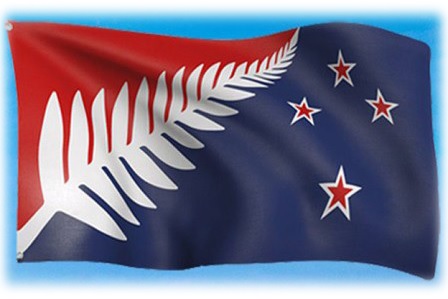The Golden Bay coasts down in a rolling sandbank about 30 km long. It is called Farewell Spit. This nature reserve is open to walkers until a 4-km-frontier. Our travel guide gives a hint to guided tours and we booked one via Internet from Masterton for today. The tours are dependent on the time of tides, the difference of the water level between high and low tide is tremendous. All the inlets and a vast part of the bay itself totally fall dry in low tide. The weather forecast for today has been promising and is confirmed: Only some kilometres down the bay clouds are hovering in the mountains, the headland itself is bathing in the sunshine.
We spend the day with „Farewell Spit Nature Experience“, 20 minutes before the tour starts we reach the meeting point at the Old School Café in Pakawau. Besides us there are no other tourists. Normally they do not guide a tour for only two persons. We are lucky as a new driver has to be instructed and so two flys can be killed with one stone. Alan, the new driver, seems to have passed his retirement age for quite a while, nevertheless introduces himself as a rookie. The actual guide is called Marty who knows the area like the back of his hand. So the four of us start in a bus big enough to carry 20 people. From time to time we stop so Marty may explain certain things to Alan. In exchange it is OK when Gernot and I want to stop at a special place and deboard the bus.
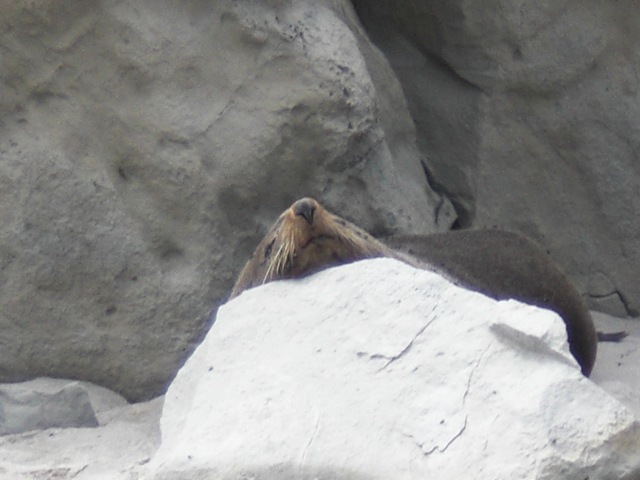
The tour lasts about six hours and offers an unforgettable experience. We reach the far most Northern spot of the South Island, learn a lot about the history of the area, of whale strandings, of the birds… At Fossil Point you normally always see some of the New Zealand Fur Seals and Marty takes us very close. The seals look very harmless and nice, you are tempted to play ball with them. As I carefully try to get closer to a drowsing male it hisses at me and shows its very impressive teeth.
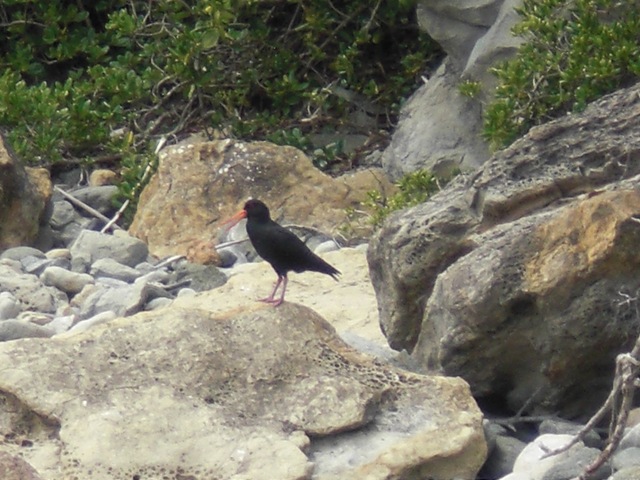
Oyster Catcher sit on the the rocks and rant and rave as we come too close to their eggs. They just lay them somewhere in the sand, how are we supposed to know where there might be a clutch? One bird loses its temper, it starts a bomb dive at us, narrowly missing our heads.
The tour leads along the Northern edge of the headland until the very end. We see different kinds of Oyster Catchers and Cormorants, some kinds of seagulls and other beach runners and also seals. Today some dead sharks have been washed ashore, we can only guess wether they are victims of fishing boats or Orcas. On the far edge of Farewell Spit Gannets built themselves a colony but as they are currently breeding we can only watch them from the far. Some of the imposing birds fly above our heads to go fishing on the sea.
We take a break at the old lighthouse. Marty serves tea and coffee. Until the flare had been automatized people lived here indeed, the lighthouse keepers and their families. It is only a very long sandbank – to create somewhat friendly surroundings they brought an uncountable amount of large bags with top soil on horses. You can exactly see that spot from the other end of the bay, it’s the only place with trees and bushes.
On our way back we stop at a high dune to stump all the way up for a last stunning panorama. The way leads down on the steepest side of the dune and we do as Marty and Alan do, we just let the sand carry us down - „let your inner child out!“ We will never forget this day!
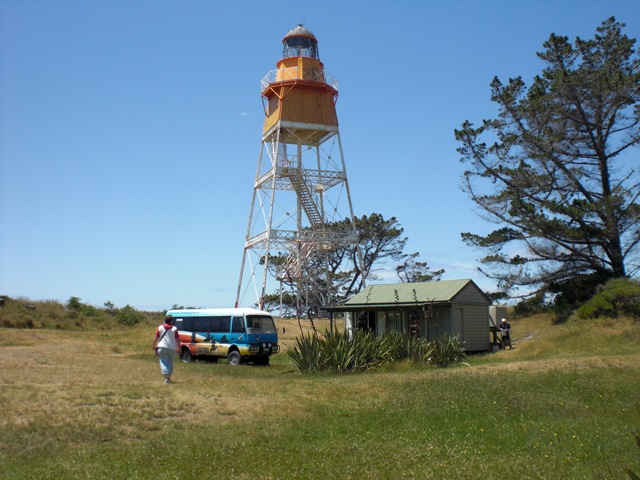
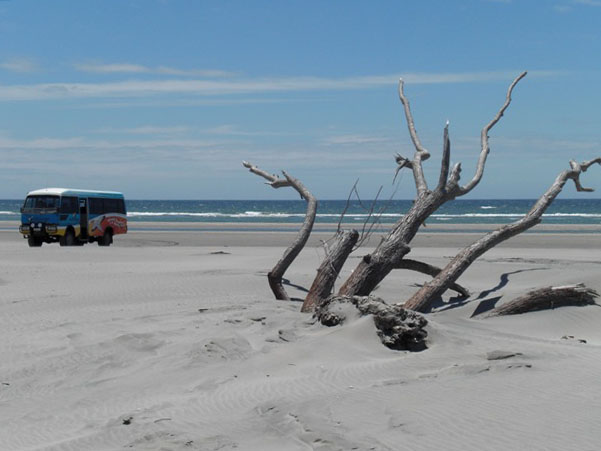
Why do the sandflies always bite me instead of Gernot?
